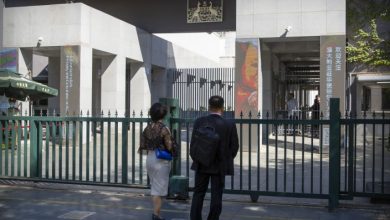Gems hidden beneath the land we walk

This week at the Museum, the volunteer support group have been doing a bit of work in the mines room. Originally set up in 1997, the room features a 3D display of the mine at Girilambone at that time. Tritton, the current operators, have been updating the display with some new photographs and are continuing to improve this room. Featured are some excellent, museum quality mineral specimens from the mine. Along with smaller samples of native copper, there is a massive example of irregular, fracture fill native copper over 1 meter in length. There are many professionally mounted samples of the different copper ores used to extract the valuable mineral, as well as excellent examples of Gossan. Gossan is intensely oxidised, weathered, decomposed rock, usually the upper and exposed part of an ore deposit or mineral vein. Usually all that remains of the ore is iron oxides and quartz. At times, other minerals exist, replacing the pyrite and primary ore minerals. In the 19th and 20th centuries gossans were important guides to buried ore deposits used by prospectors in their quest for metal ores. An experienced prospector could read the clues in the structure of the gossans to determine the type of mineralization likely to be found below. Azurite is a soft stone, named for its deep “azure blue” colour. It is a copper carbonate mineral found in the upper oxidized portions of copper ore and is therefore Gossan. A Grey Nomad that visited last week who was a geologist, was very impressed with out Azurite samples and also the malachite and carbonates. Malachite is now mostly used for its gemstone qualities. Malachite has a green colour that does not fade over time or when exposed to light. Most samples we have are a dull green, however, we have a small, smooth, lustrous specimen found at the West Bogan mine, Mudall in 1920. This stone was donated by Peter Woodlock. Pictured are two small samples of Gossan, featuring Azurite and Malachite, and two small samples of Native Copper. Visit Us Today: Monday- Friday from 9am to 4pm. Saturday and Sunday 9am to 4:30pm. Visit Us Today: Monday- Friday from 9am to 4pm. Saturdays from 10am until 12noon. (Sundays by appointment.)
This week at the Museum, the volunteer support group have been doing a bit of work in the mines room. Originally set up in 1997, the room features a 3D display of the mine at Girilambone at that time. Tritton, the current operators, have been updating the display with some new photographs and are continuing to improve this room.
Featured are some excellent, museum quality mineral specimens from the mine. Along with smaller samples of native copper, there is a massive example of irregular, fracture fill native copper over 1 meter in length.
There are many professionally mounted samples of the different copper ores used to extract the valuable mineral, as well as excellent examples of Gossan. Gossan is intensely oxidised, weathered, decomposed rock, usually the upper and exposed part of an ore deposit or mineral vein. Usually all that remains of the ore is iron oxides and quartz. At times, other minerals exist, replacing the pyrite and primary ore minerals.
In the 19th and 20th centuries gossans were important guides to buried ore deposits used by prospectors in their quest for metal ores. An experienced prospector could read the clues in the structure of the gossans to determine the type of mineralization likely to be found below.
Azurite is a soft stone, named for its deep “azure blue” colour. It is a copper carbonate mineral found in the upper oxidized portions of copper ore and is therefore Gossan. A Grey Nomad that visited last week who was a geologist, was very impressed with out Azurite samples and also the malachite and carbonates.
Malachite is now mostly used for its gemstone qualities. Malachite has a green colour that does not fade over time or when exposed to light. Most samples we have are a dull green, however, we have a small, smooth, lustrous specimen found at the West Bogan mine, Mudall in 1920. This stone was donated by Peter Woodlock.
Pictured are two small samples of Gossan, featuring Azurite and Malachite, and two small samples of Native Copper.
Visit Us Today: Monday- Friday from 9am to 4pm. Saturday and Sunday 9am to 4:30pm.
Visit Us Today: Monday- Friday from 9am to 4pm. Saturdays from 10am until 12noon. (Sundays by appointment.)
[contf]
[contfnew]

Nyngan Observer
[contfnewc]
[contfnewc]




